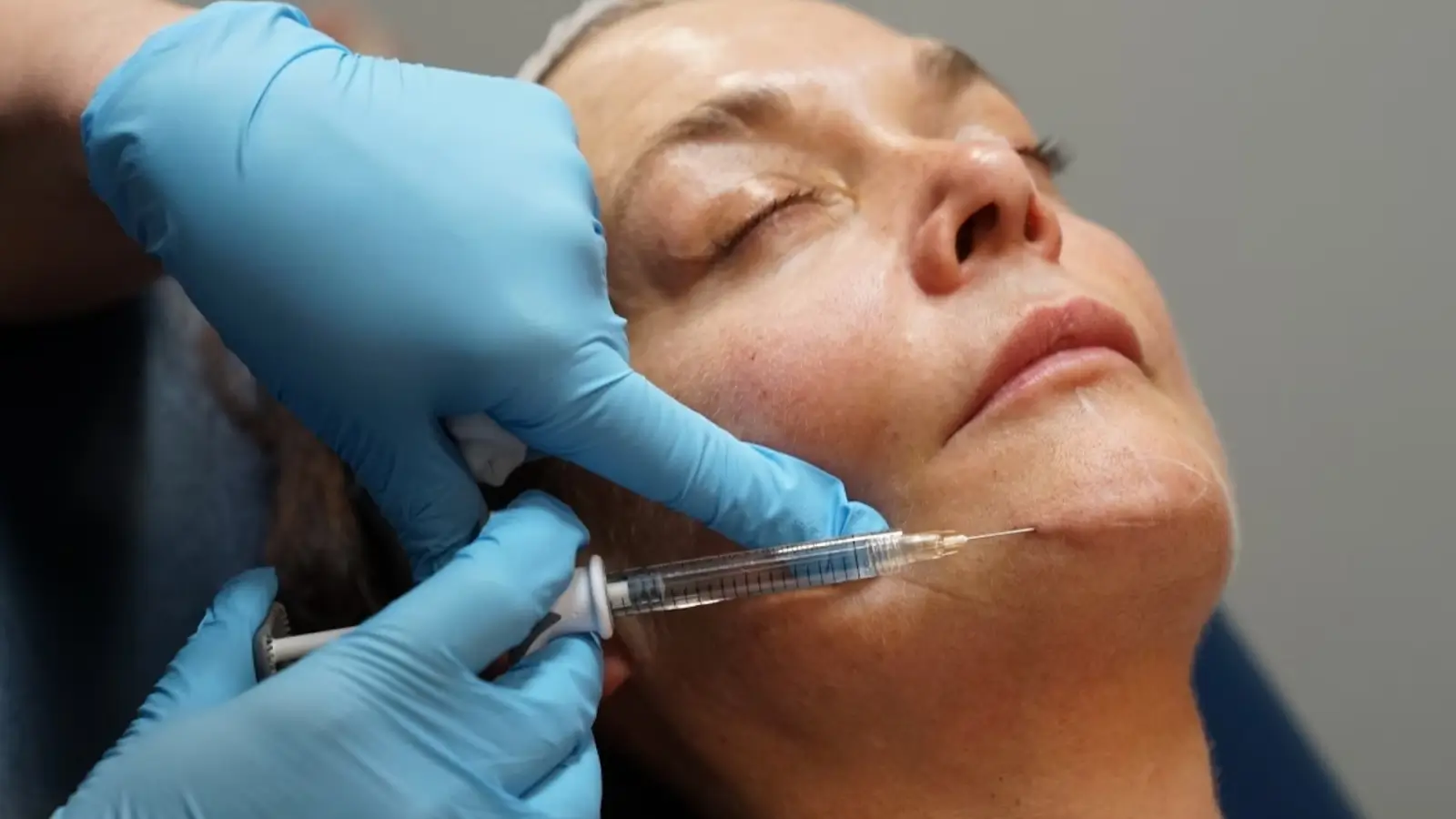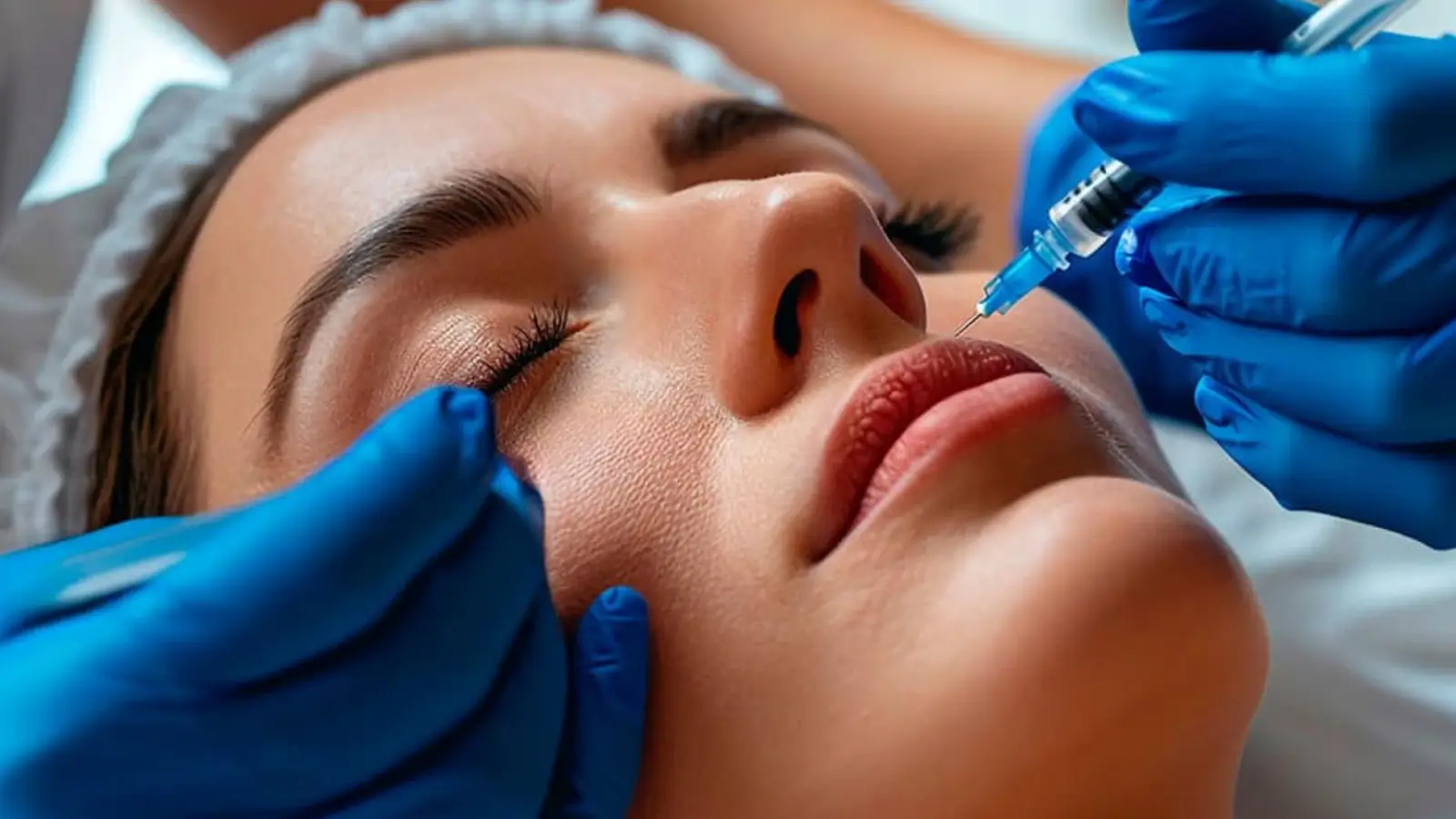
Facial rejuvenation procedures have surged in popularity, with an estimated 23.6 million minimally invasive aesthetic treatments performed in the U.S. alone in 2022. Dermal fillers, which restore volume and smooth wrinkles, are among the most sought-after treatments. With numerous options available, patients need to understand the differences between products to make the best choice for their needs.
Two major names in the dermal filler industry are Neuramis and Juvederm. Both are designed to address signs of aging, but they differ in formulation, effectiveness, and the overall treatment experience. Understanding these distinctions is vital for selecting the most suitable option for each individual.
In this article, we will compare Neuramis vs Juvederm, exploring their unique qualities, effectiveness, and differences to help you determine which filler may best address your facial rejuvenation needs.
Key Takeaways
- Neuramis and Juvederm are hyaluronic acid-based dermal fillers designed to address facial aging concerns, such as wrinkles, volume loss, and skin contouring.
- Neuramis uses a firmer gel, making it ideal for deeper wrinkles and volume restoration, while Juvederm’s smoother consistency is better suited for delicate areas like the lips and under-eyes.
- Neuramis is often used to restore volume in the cheeks and jawline, whereas Juvederm offers targeted formulations like Juvederm Ultra for lips and Juvederm Voluma for deep volumizing.
- Neuramis provides results lasting 6–12 months, while Juvederm products can last from 6 to 18 months, depending on the formulation used.
- Common side effects for both fillers include redness, swelling, and bruising. Rare complications like infection, lumps, and allergic reactions can occur but are uncommon.
About: Doctor Medica is your trusted supplier of top-quality dermal fillers, viscosupplements, and more for your medical practice. We offer genuine products from leading brands at the lowest prices. Contact Doctor Medica today to order Neuramis online for your practice.
Introduction to Neuramis and Juvederm

Neuramis and Juvederm are two of the most popular hyaluronic acid-based dermal fillers used in aesthetic treatments to combat signs of aging. Neuramis, developed by Medytox, is known for its advanced cross-linking technology. It offers smooth, natural-looking results with long-lasting effects. It primarily addresses moderate to deep wrinkles and volume loss, particularly in the face.
Juvederm, developed by Allergan, is one of the most recognized names in the filler industry. Its range of products caters to various treatment areas, including fine lines, deeper folds, and lip enhancement, with formulations that provide smooth, consistent results.
Given that both fillers are effective but have distinct characteristics, comparing Neuramis and Juvederm is crucial for making an informed decision. Understanding their differences in formulation, longevity, and suitability for specific facial areas can help you choose the best option to meet your aesthetic goals.
Formulation and Composition

Neuramis fillers are developed using SHAPE (Stabilized Hyaluronic Acid and Purification Enhancement) technology. This technology stabilizes cross-linking and enhances the purification process, producing a high-quality, biocompatible filler. Neuramis products contain cross-linked hyaluronic acid, which provides long-lasting results.
The fillers are known for their high cohesiveness, allowing them to maintain their shape and provide natural-looking results. Neuramis formulations also include lidocaine to minimize discomfort during injection.
Juvederm fillers utilize VYCROSS technology, which blends different molecular weights of hyaluronic acid to create a smooth, gel-like consistency. This formulation provides natural-looking results and is tailored for specific facial areas and aesthetic needs.
Juvederm products also contain lidocaine for added comfort during the injection process. The fillers are designed to address signs of aging, such as wrinkles, fine lines, and volume loss.
Key Differences
- Cross-Linking Technology: Neuramis uses SHAPE technology, while Juvederm uses VYCROSS technology.
- Consistency and Texture: Neuramis fillers are known for their high cohesiveness and viscosity, whereas Juvederm fillers have a smooth, gel-like consistency.
- Lidocaine Content: Both Neuramis and Juvederm include lidocaine, but the concentration and formulation may var.y
Treatment Areas and Use Cases

Neuramis and Juvederm are versatile dermal fillers that target specific facial areas to achieve different aesthetic goals. Neuramis is suitable for various facial rejuvenation treatments, including:
- Lip Enhancement: Neuramis fillers can add volume and definition to the lips, creating a fuller and more youthful appearance.
- Wrinkle Reduction: They effectively smooth fine lines and wrinkles, particularly around the mouth and eyes.
- Volume Restoration: Neuramis can restore lost volume in areas such as the cheeks and nasolabial folds, enhancing facial contours.
Meanwhile, Juvederm offers specialized formulations designed for specific facial areas:
- Wrinkle Reduction: Juvederm Ultra and Juvederm Ultra Plus are commonly used to smooth moderate to severe wrinkles and folds, such as nasolabial folds and marionette lines.
- Lip Augmentation: Juvederm Volbella is specifically formulated for subtle lip enhancement and smoothing vertical lip lines.
- Cheek Contouring: Juvederm Voluma is designed to add volume to the cheeks, creating a lifted and more contoured appearance.
- Under-Eye Treatment: Juvederm Volite can improve skin texture and hydration around the delicate under-eye area.
Longevity and Patient Satisfaction
Neuramis fillers generally provide results that last between 6 to 12 months, depending on the specific product and treatment area. Factors such as the patient’s skin type, age, and lifestyle can influence the longevity of the results. Neuramis’s formulation boasts high cohesiveness, which helps maintain its shape and effectiveness over time.
As for Juvederm, these fillers typically offer results that last from 9 months to 2 years, varying by product and treated area. For example, Juvederm Voluma, used for cheek augmentation, can last up to 2 years, while Juvederm Volbella for lip enhancement may last up to 1 year. The longevity of Juvederm’s results is influenced by its VYCROSS technology, which enhances the filler’s stability and duration.
Factors Influencing Patient Preference
- Duration of Results: Patients seeking longer-lasting results might prefer Juvederm products for certain treatments.
- Treatment Area: There are specific formulations for particular facial areas, influencing preference based on individual needs.
- Consistency and Feel: The texture and consistency of the filler can affect patient satisfaction and desired outcomes.
- Comfort During Procedure: Neuramis and Juvederm contain lidocaine, but patient experiences with injection comfort may vary.
Choosing Between Neuramis and Juvederm
Choosing between Neuramis and Juvederm depends on several factors, including the following:
- Treatment Area
- Longevity
- Desired Result
Patient needs also play a significant role in choosing between Neuramis and Juvederm. For those seeking a more affordable yet effective filler, Neuramis is an attractive option. However, it’s important to note that Neuramis FDA approval is still pending in the United States, which may be a factor for those who prioritize FDA-approved products.
In contrast, Juvederm is widely available and FDA-approved for various uses, offering patients reassurance in terms of safety and regulation.
Injection Techniques and Expected Results
Both Neuramis and Juvederm require precision and skill during administration to ensure natural-looking, safe results. Neuramis fillers are typically injected using a fine needle or cannula technique, depending on the treatment area and desired outcome. The injection process involves creating precise, small deposits of filler in the targeted areas to enhance volume and reduce wrinkles.
For Juvederm, these fillers also use fine needle or cannula techniques tailored to the specific product and treatment area. The VYCROSS technology enables a smoother gel consistency, allowing for easy injection and precise placement. Techniques such as linear threading, fanning, or serial puncture may be used to achieve optimal results.
Patients can expect immediate results from both Neuramis and Juvederm. Neuramis provides long-lasting effects, with noticeable volume restoration and smoother skin typically lasting between 6 and 12 months, depending on the treatment area. It is particularly effective for deeper wrinkles, restoring natural facial contours.
Juvederm, with its diverse range of products, offers results that last anywhere from 6 to 18 months, depending on the formulation used.
Side Effects and Safety Considerations
Both fillers can cause temporary side effects at the injection site, such as swelling, redness, bruising, tenderness, and firmness. These reactions are usually mild and resolve within a few days to weeks.
In rare cases, more serious complications can occur. Infection is a potential risk if practitioners don’t follow proper hygiene and sterile techniques during the procedure. Patients should also be aware of lumps or nodules under the skin, which can sometimes form due to the body’s reaction to the filler. These are generally harmless but may require professional assessment if they persist.
To minimize risks, only a qualified and experienced medical professional can administer this treatment. Following post-treatment care instructions, such as avoiding strenuous activities and applying cold compresses, can help manage potential side effects. Additionally, informing the provider about any allergies, medications, or medical conditions is crucial for ensuring a safe treatment experience.
Conclusion
Neuramis and Juvederm offer effective solutions for facial rejuvenation, each with its advantages depending on the patient’s needs and desired outcomes. While Neuramis may be more suitable for deep volume restoration and wrinkle smoothing, Juvederm provides a broader range of formulations for precise treatment of different facial areas.
With the guidance of a skilled professional, patients can achieve safe, natural-looking results that enhance their facial appearance and boost confidence.
FAQs
1. How long do the results of Neuramis and Juvederm last?
Neuramis typically lasts 6 to 12 months, while Juvederm products can last anywhere from 6 to 18 months, depending on the specific formulation used.
2. What areas of the face can Neuramis and Juvederm treat?
Neuramis is ideal for volume restoration and wrinkle reduction in areas like the cheeks and jawline. Juvederm offers specialized treatments for the lips, under-eyes, and nasolabial folds.
3. How do Neuramis and Juvederm differ in formulation?
Neuramis uses a firmer gel due to its V-phasic cross-linking technology, making it ideal for deeper wrinkles and volume restoration. Juvederm has a smoother consistency and is more versatile for delicate areas such as the lips.
4. Is Neuramis FDA-approved in the U.S.?
While Juvederm is FDA-approved in the U.S., Neuramis FDA approval is still pending, though it is approved in other regions like Europe and Asia.
References
2022 Plastic Surgery Statistics. American Society of Plastic Surgeons. https://www.plasticsurgery.org/news/plastic-surgery-statistics?sub=2022+Plastic+Surgery+Statistics
Liu, Y., Mao, R., Xiao, M., Zhu, W., Liu, Y., & Xiao, H. (2024). Facial Rejuvenation: A Global Trend of Dermatological Procedures in the Last Decade. Plastic and reconstructive surgery. Global open, 12(6), e5801. https://doi.org/10.1097/GOX.0000000000005801
Medytox Academy. (n.d.). Neuramis. Medytox Academy. Retrieved December 2, 2024, from http://medytoxacademy.com/page/neuramis
Related Articles
Joanna Carr
Can Dermal Fillers Enhance a Person’s Appearance?
Interested in learning more about Dermal Fillers Enhancing a Person's Appearance? Browse Doctor Medica's comprehensive archive of blog posts.
Joanna Carr
Botox Reconstitution Guide
Learn everything about Botox reconstitution: dilution ratios, step-by-step guide, and tips for medical professionals to achieve optimal results.
Joanna Carr
Intraline Filler Reviews – How Do They Fare?
Explore real user and practitioner reviews of Intraline dermal fillers. Assess their performance, longevity, and patient satisfaction across various a...


